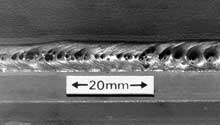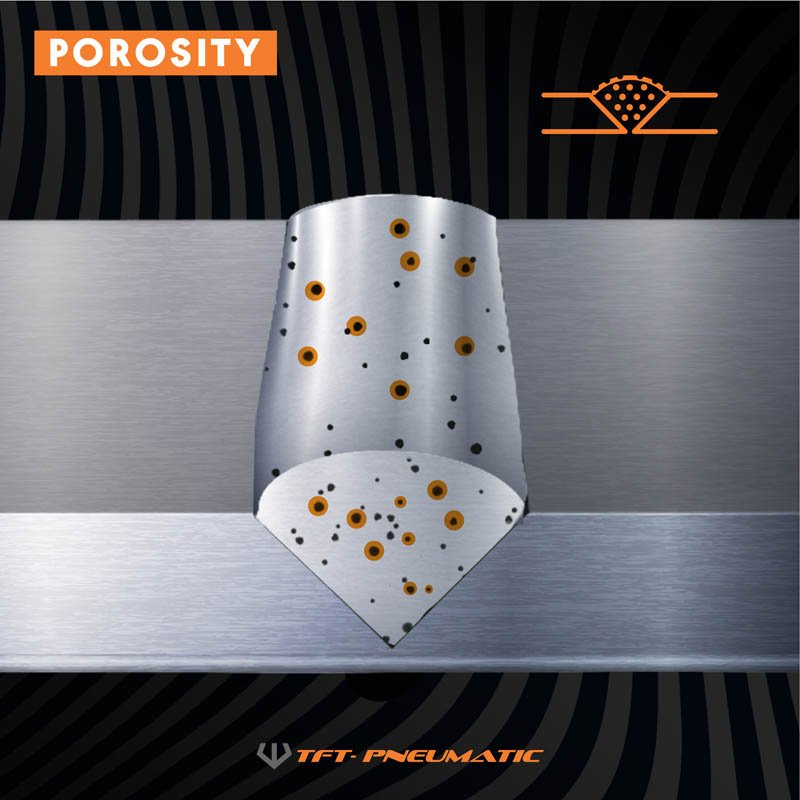What is Porosity in Welding: Trick Variables and Their Impact on Weld Quality
The Science Behind Porosity: A Comprehensive Overview for Welders and Fabricators
Understanding the elaborate devices behind porosity in welding is essential for welders and makers striving for impressive workmanship. From the structure of the base products to the ins and outs of the welding process itself, a plethora of variables conspire to either aggravate or relieve the existence of porosity.
Recognizing Porosity in Welding
FIRST SENTENCE:
Assessment of porosity in welding exposes important understandings into the honesty and high quality of the weld joint. Porosity, defined by the visibility of dental caries or gaps within the weld metal, is a typical worry in welding processes. These spaces, otherwise correctly dealt with, can endanger the structural integrity and mechanical homes of the weld, resulting in prospective failures in the completed product.

To discover and measure porosity, non-destructive testing approaches such as ultrasonic screening or X-ray evaluation are usually used. These strategies permit the recognition of internal flaws without jeopardizing the integrity of the weld. By analyzing the dimension, form, and circulation of porosity within a weld, welders can make informed decisions to boost their welding procedures and attain sounder weld joints.

Variables Affecting Porosity Formation
The event of porosity in welding is affected by a myriad of aspects, varying from gas protecting efficiency to the ins and outs of welding specification settings. One vital variable adding to porosity formation is insufficient gas shielding. When the shielding gas, normally argon or carbon dioxide, is not effectively covering the weld swimming pool, climatic gases like oxygen and nitrogen can infect the liquified steel, resulting in porosity. Additionally, the tidiness of the base products plays a substantial duty. Contaminants such as corrosion, oil, or dampness can vaporize during welding, developing gas pockets within the weld. Welding criteria, including voltage, current, take a trip rate, and electrode type, likewise influence porosity formation. Using inappropriate settings can create extreme spatter or heat input, which in turn can result in porosity. In addition, the welding method used, such as gas metal arc welding (GMAW) or protected metal arc welding (SMAW), can affect porosity development due to variations in warm distribution and gas coverage. Comprehending and regulating these elements are important for minimizing porosity in welding operations.
Effects of Porosity on Weld Quality
Porosity formation dramatically compromises the architectural honesty and mechanical properties of welded joints. When porosity is existing in a weld, it develops voids or tooth cavities within the product, decreasing the general toughness of the joint. These spaces work as stress concentration points, making the weld more at risk to splitting and failing under tons. The existence of porosity additionally damages the weld's resistance to rust, as the trapped air or gases within deep spaces can react with the surrounding atmosphere, causing degradation over time. In addition, porosity can prevent the weld's capacity to hold up against stress or impact, more endangering the total quality and dependability of the bonded structure. In important applications such as aerospace, vehicle, or structural building and constructions, where safety and security and longevity are vital, the damaging results of porosity on weld quality can have serious effects, stressing the significance of minimizing porosity with appropriate welding methods and procedures.
Techniques to Lessen Porosity
To enhance the high quality of bonded joints and make sure structural stability, welders and makers employ certain techniques aimed at reducing the development of spaces and tooth cavities within the material during the welding procedure. read the article One reliable technique to decrease porosity is to make sure correct product prep work. This consists of thorough cleaning of the base metal to get rid of any type of impurities such as oil, grease, or wetness that can add to porosity formation. Furthermore, utilizing the ideal welding parameters, such as the right voltage, current, and travel rate, is essential in stopping porosity. Preserving a consistent arc size and angle during welding additionally aids lower the possibility of porosity.

Moreover, choosing the appropriate securing gas and keeping correct gas circulation prices are important in reducing porosity. Utilizing the proper welding method, such as back-stepping or utilizing a weaving movement, can likewise assist disperse warm evenly and decrease the chances of porosity formation. Lastly, ensuring correct ventilation in their explanation the welding atmosphere to get rid of any kind of prospective sources of contamination is essential for attaining porosity-free welds. By applying these strategies, welders can effectively decrease porosity and generate top notch welded joints.

Advanced Solutions for Porosity Control
Executing advanced innovations and ingenious approaches plays a critical duty in accomplishing superior control over porosity in welding procedures. One sophisticated solution is the use of innovative gas blends. Protecting gases like helium or a blend of argon and hydrogen can help in reducing porosity by providing much better arc security and enhanced gas coverage. In addition, using advanced welding strategies such as pulsed MIG welding or modified atmosphere welding can likewise aid alleviate porosity concerns.
Another sophisticated option entails making use of sophisticated welding equipment. Using tools with integrated attributes like waveform control and advanced power sources can enhance weld quality and minimize porosity threats. The execution of automated welding systems with accurate control over specifications can considerably lessen porosity flaws.
Moreover, integrating sophisticated monitoring Check This Out and inspection technologies such as real-time X-ray imaging or automated ultrasonic testing can assist in detecting porosity early in the welding procedure, permitting for instant restorative actions. Overall, integrating these sophisticated solutions can greatly boost porosity control and improve the general quality of bonded elements.
Verdict
In conclusion, recognizing the science behind porosity in welding is crucial for welders and fabricators to produce high-quality welds - What is Porosity. Advanced remedies for porosity control can further improve the welding process and guarantee a solid and dependable weld.